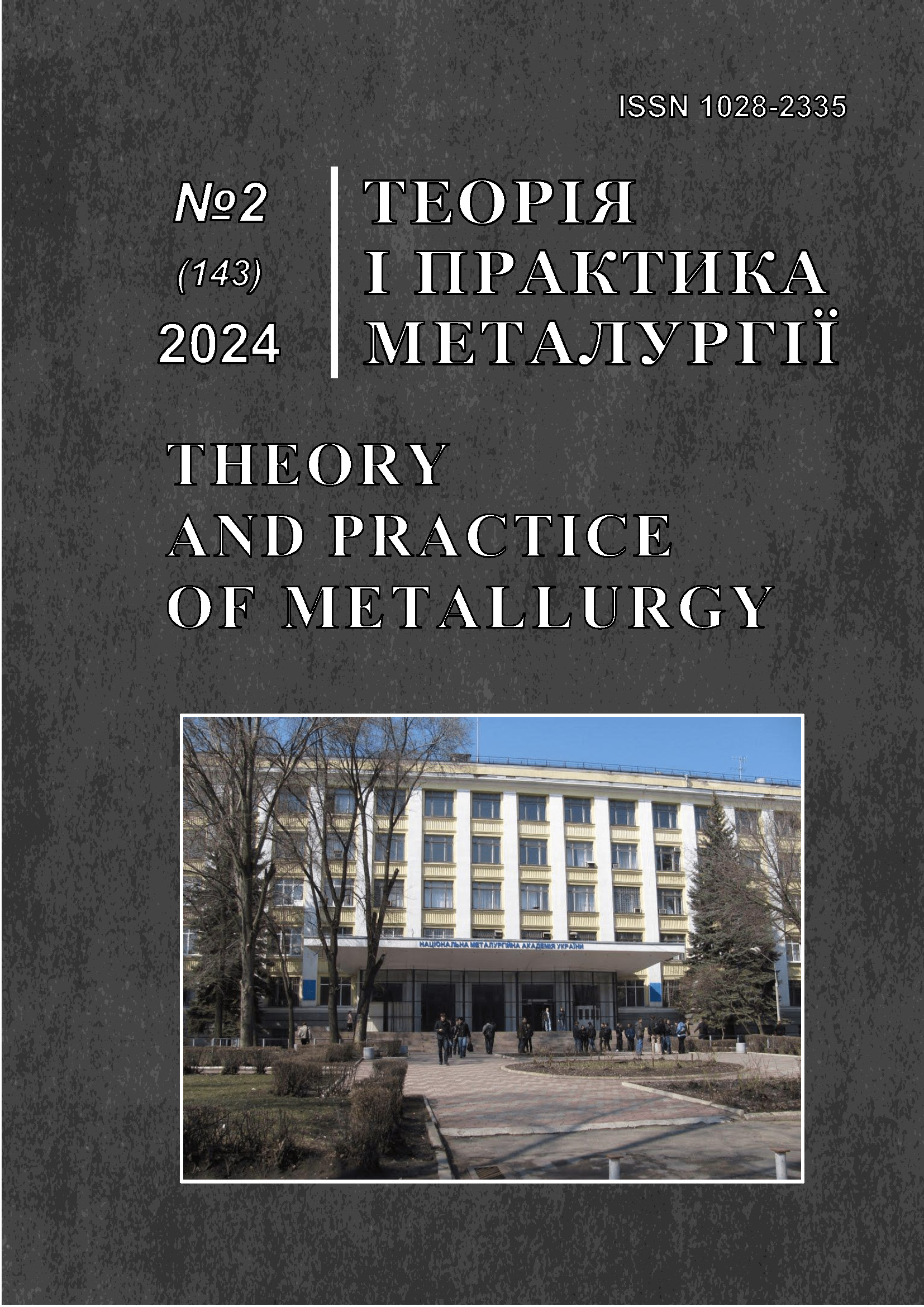Alloying cast iron with phosphorus to improve the functional properties of products
DOI:
https://doi.org/10.15802/tpm.2.2024.04Keywords:
ferrophosphorus, cast iron, phosphide eutectic, wear resistance, antifriction properties, eutectoid cementite, perlite dispersion, modifier, graphite, engine liners, brake padsAbstract
Along with the traditional production of cast iron, there are a number of grades with a high phosphorus content. Phosphorous cast iron exhibits a number of beneficial properties. The increased phosphorus content in cast iron leads to an increase in the hydraulic mobility of the solution, improves antifriction properties and wear resistance. In cast iron, which contains more carbon compared to steels, phosphorus forms eutectic that includes Fe3P. Depending on the phosphorus content in lamellar graphite cast iron and high-strength nodular cast iron, the phosphide eutectic appears as misaligned individual inclusions, or a broken or continuous mesh. The paper presents the results of the research on the effect of various phosphorus concentrations on the functional properties of products. In Ukraine’s metallurgical industry, the demand for ferrophosphorus is mainly met by imports, and therefore, supplying metallurgical enterprises with domestic phosphorus-containing materials, such as ferrophosphorus, for smelting a wide range of cast irons appears to be an urgent task.
References
Volchok, I. P., Yehorov, A. O., & Slynko, H. I. (1999). Micromechanism of Fracture and Properties of Phosphorous Cast Irons. In Panasiuk, V. V. (Ed.) Mechanics of Fracture of Materials and Strength of Structures, Issue 2, Vol. 1. Kameniar. (pp. 208-220)
Andreiko, I. M., Slynko, H. I., Ostash, O. P.,& Volchok, I. P. (2000). Cyclic Crack Resistance of Gray and High-Strength Cast Irons with High Phosphorus Content. Physical and Chemical Mechanics of Materials, (6), 5-51
Bogachev, I. M. (1952). Metallurgy of Cast Iron. Mashgiz
Abbasi, H. R., Bazdar, M. & Halvaee, A. (2007). Effect of Phosphorus as an Alloying Element on Microstructure and Mechanical Properties of Gray of Cast Iron. Materials Science and Engineering, 444(1-2), 314-317. https://doi.org/10.1016/j.msea.2006.08.108
Shirokov, V. V., Arendar, L. A., Slynko, H. I., & Volchok, I. P. (2003). Influence of Phosphide Eutectics on Wear of High-Strength Cast Irons. Physical and Chemical Mechanics of Materials. No. 2. P. 115-117
Tomilson, W. J., & Dennison, G. (1989). Effect of Phosphide and Matrix Microstructures on the Dry Sliding Wear of Gray Cast Iron. Tribology International, 22(4), 259-264. https://doi.org/10.1016/0301-679X(89)90084-4
Syrokvashev, A. V., & Bauman, B. V. (2000). Modification of Gray Phosphorous Cast Irons for Castings Operating in Friction Conditions. Foundry production, (9),16-18
Syrokvashev, A. V., Bauman, B. V., & Vorobiov, A. P. (1997). Modification of Gray Phosphorous Cast Irons for Ingots of Automobile Diesel Engine Liners. News of Higher Educational Institutions. Black Metallurgy, 6-77.
Khuntrakool, C., Janudom, S., Muangjunburee, P., Anusit, J., Narissara, M., & Thiemsak, C. (2025). Control of Graphite Structure in High Phosphorus Grey Cast Iron Brake Shoes through Ferro-Silicon Inoculant. Inter Metalcast, 19, 259–270. https://doi.org/10.1007/s40962-024-01302-y
Khuntrakool, C., Janudom, S., Muangjunburee, P., Mahathaninwong, N., Chucheep, T., Choticarn, T., & Yodjan, A. (2022). Effects of Chemical Composition on Microstructure and Properties of High Phosphorus Grey Cast Iron Brake Shoe. Inter Metalcast, 16, 1221–1234. https://doi.org/10.1007/s40962-021-00671-y
Zhukov, A. A., Afanaskin, A. V., Onalikhina, O. D., et al. (1996). Investigation of the Properties of Cast Irons Alloyed with Copper and Phosphorus Operating under High Class Conditions. News of Higher Educational Institutions. Black Metallurgy, (1), 59-61
Alibaiev, Zh. D., Sukharnikov, Yu. I., Druinskii, M. I., & Melikaiev, N. P. (1977). Experimental tests on the production and use of ferrosilicon phosphate. Institute of Metallurgy and Enrichment of the Academy of Sciences of Kazakhstan
Downloads
Published
How to Cite
Issue
Section
License
Copyright (c) 2024 Proidak A.Y.

This work is licensed under a Creative Commons Attribution 4.0 International License.
Authors retain copyright of the published papers and grant to the publisher the non-exclusive right to publish the article, to be cited as its original publisher in case of reuse, and to distribute it in all forms and media. Articles will be distributed under the Creative Commons Attribution 4.0 International (CC BY 4.0) licence.
Authors can enter the separate, additional contractual arrangements for non-exclusive distribution of the published paper (e.g., post it to an institutional repository or publish it in a book), with an acknowledgement of its initial publication in this journal.




